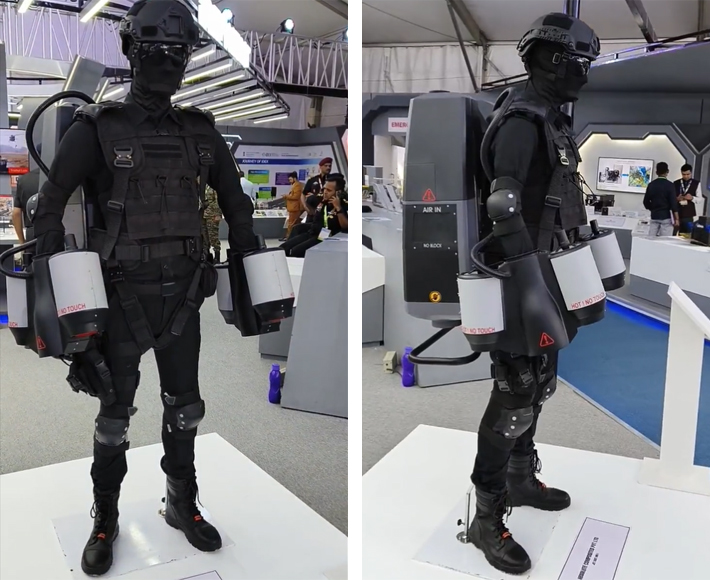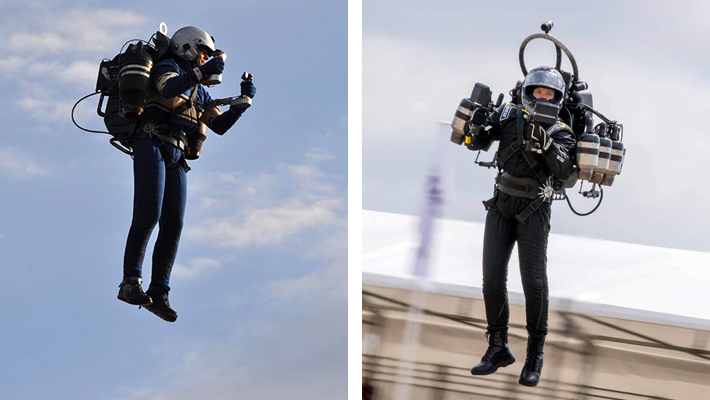INDIAN ARMED FORCES CHIEFS ON
OUR RELENTLESS AND FOCUSED PUBLISHING EFFORTS

SP Guide Publications puts forth a well compiled articulation of issues, pursuits and accomplishments of the Indian Army, over the years

I am confident that SP Guide Publications would continue to inform, inspire and influence.

My compliments to SP Guide Publications for informative and credible reportage on contemporary aerospace issues over the past six decades.
- Prime Minister witnesses 'Bharat Shakti' – a Tri-Services Firing and Manoeuvre Exercise in Pokhran, Rajasthan
- Interim Defence Budget 2024-25 — An Analysis
- Union Defence budget 2024
- Prime Minister Modi Commemorates Indian Navy Day in a Grand Ceremony
- Prime Minister Modi Flies in the LCA Tejas
- New Chapter in India-Italy Defence Ties
- Airpower beyond Boundaries
Military Jetpack and HAPS
Next-Gen defence with DRDO's Electric Jetpack Prototype and High-Altitude Pseudo Satellite (HAPS)
 |
The Author is Former Director General of Information Systems and A Special Forces Veteran, Indian Army |

According to news reports of February 11, 2024, the Defence Research Development Organisation (DRDO) is planning to hand over the prototype of an electric jetpack for military trials in a few months from now and is working to explore options for extending the wearable human flight platform's current flight range of 20 minutes to around two hours.
In March 2023, it was reported that the Indian Army had started the process of testing jetpack suits developed by a British company 'Gravity Industries' after demonstration of the jetpack system was given by the company at the Indian Army's Army Airborne Training School (AATS) at Agra. DRDO's jetpack or wearable human flight platform is likely to be different from the one made by the British company as it is likely to use battery-run electric ducted fans instead of micro gas turbines (jet engine).
The DRDO prototype would reportedly have a flight range of two hours, enabling operations in difficult terrain, as also in counter-insurgency operations
Electric ducted fans (EDFs) are integrated propulsion systems consisting of a multi-bladed fan, a high-power-density electric motor, and a shroud surrounding the fan and motor. The DRDO is working on a prototype, which will be ready in a few months time, to achieve a high thrust to weight ratio for the jetpack as this will help it achieve better endurance or range vis-a-vis a fueled jet.

The 43rd Report of Parliament's Standing Committee on Defence released in December 2023 had mentioned the DRDO undertaking a feasibility study to demonstrate a wearable human flight platform, utilising battery driven Electric Ducted Fans (EDFs). EDFs are the alternative to the micro gas turbine (Jet Engine) used in the Jetpack by other countries. The DRDO prototype would reportedly have a flight range of two hours, enabling operations in difficult terrain, as also in counter-insurgency operations.
Some indigenous private companies are also undertaking research and development on jetpacks
Some indigenous private companies, like the Bengaluru-based 'Absolute Composites', are also undertaking research and development on jetpacks. Absolute Composites has reportedly managed to narrow down on a product that costs much less than the jetpack of the British company Gravity. The DRDO, therefore, will have competition from indigenous private companies in supplying jetpacks to the Armed Forces, which is a good development.
Transport studies of the US Army Transportation Research Command (TRECOM) determined that personal jet devices could have diverse uses: for reconnaissance, crossing rivers, amphibious landing, accessing steep mountain slopes, and overcoming minefields, tactical maneuvering and the like.

Jetpack Aviation, a company founded by David Mayman, has developed jetpack prototypes called JB-9 and JB-10. These jetpacks use turbojet engines and have been demonstrated in controlled environments. The JB10 is powered by two specially modified turbojet engines, each producing approximately 200 lbs of thrust (at standard atmospheric conditions). It can run on kerosene, Jet A or diesel.
Compared to satellites, HAPS, which operates in the stratosphere, offers lower latency and less path loss
In February 2024, scientists from Bengaluru-based National Aerospace Laboratories (NAL), under the Council of Scientific and Industrial Research (CSIR), achieved a breakthrough by successfully testing an unmanned aerial vehicle 'High-Altitude Pseudo Satellite' (HAPS) at Chitradurga's Challakere. HAPS is similar to drones but is designed to hover in the stratosphere above the airspace used by commercial airplanes. This platform, powered by solar cells and batteries, can be operated for up to 90 days while regular high-altitude long-endurance (HALE) drones operate for about 48 hours at best.

L. Venkatakrishnan, Chief Scientist and Programme Director (high-altitude platform) at NAL, told the media that HAPS platforms are of interest to military operators for intelligence, surveillance roles. They can also be used for civilian roles by acting as telecommunication satellites mainly in case of environmental disasters. Compared to satellites, HAPS, which operates in the stratosphere, offers lower latency and less path loss. Moreover, HAPS can be deployed comparatively rapidly at a lower cost and it can connect to multiple ground stations simultaneously.
In February 2024, scientists from Bengaluru-based National Aerospace Laboratories (NAL), under the Council of Scientific and Industrial Research (CSIR), achieved a breakthrough by successfully testing an unmanned aerial vehicle 'High-Altitude Pseudo Satellite' (HAPS)
The HAPS tested is a prototype; scaled-down 5-metre-long system with 12-metre wingspan, weighing 23 kg. During the trials, the prototype rose to an altitude of 2.7 km and remained airborne for 8.5 hours. It met all targeted performance metrics, as per the scientists associated with the project. By 2027, NAL is confident of building a full-scale version that could have a wingspan of under 30m and weigh between 100-150 kg. It will be able to carry payloads weighing 15 kg and fly at 23 km altitude for at least 90 days.
Pointing out that HAPS requires significant engineering expertise to fly unmanned for days using solar-powered batteries instead of jet fuel and withstand atmospheric turbulence despite being a lightweight structure, Venkatakrishnan said tests of the battery management system and the propeller for the full-scale version will be completed by September 2024.





